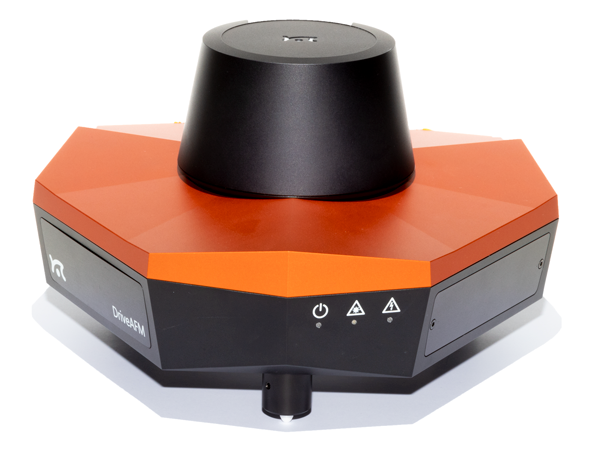Adaptive Drive as a Control Strategy for Fast Scanning in Dynamic Mode Atomic Force Microscopy
In standard Dynamic Mode imaging, the AFM probe oscillates near its first mechanical resonance, driven by a constant excitation. When the probe interacts with a surface, energy is drained from the oscillation, which reduces its amplitude compared to when it's oscillating freely. A proportional-integral-derivative (PID) loop tracks the surface, moving the probe away if the amplitude drops too much, or bringing it closer if it increases.
Dynamic Mode imaging offers significant advantages for nanoscale characterization. For instance, it can be extremely gentle on surfaces, which is crucial for biological samples.
However, a low interaction force means a small signal for tracking the surface. This usually creates a trade-off between gentle interaction and fast data acquisition. That's why advancements in imaging speed are just as important now as when this imaging mode was first developed.
In this publication, the authors describe an adaptive drive control strategy designed to improve the speed and quality of scanning in dynamic mode Atomic Force Microscopy (AFM). This method tackles issues with traditional PID controllers, which often struggle to maintain optimal cantilever oscillation amplitude over different surface topographies. By adapting the drive signal, this strategy increases scanning speed while reducing imaging artifacts, making it especially useful for real-time imaging of biological samples and processes.
AFM data in this publication were obtained with DriveAFM
The DriveAFM is Nanosurf’s novel flagship AFM platform: a tip-scanning atomic force microscope that combines, for the first time, several capabilities in one instrument to enable novel measurements in materials and life sciences.

Related Resources
#{ item.resourceType }
#{ item.date_text_field }
#{ item.name }
#{ truncateText(item.metadescription) }
#{ item.readmoretext }